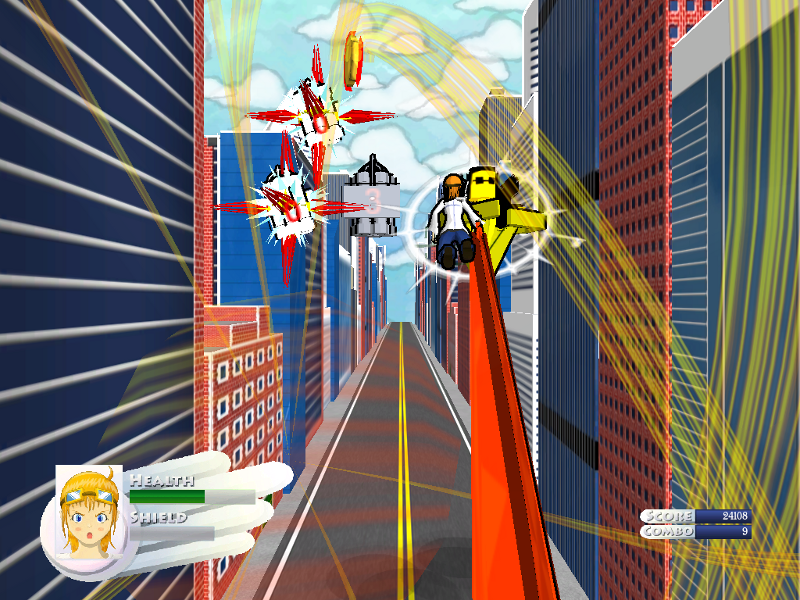A surreal 3D-slasher that parodies Japanese pop-art.
Download: Paper (PDF) | Windows Executeable (ZIP) | Mac App (ZIP) | Source (ZIP)
Objective
To design an on-rails 3D-slasher similar to the StarFox series that paradies Japanese pop-art. Play it now!
Trailer
Description
Save The Princess is a three-man final project for Experimental Game Design. Our intent was to create a parody Japanese pop-art and cover the controversial theme of gay marriage. The project was finished within 2 months.
The nameless heroine must defeat the government and religious oppression to save her beloved Princess locked in a Church far, far away. To defend herself, the heroine uses her unexplained ability to fly and a comically large sword to slice anything that gets in her way.
Marshall Farley worked as the 2D and 3D artist; Bill Oparowski, as sound engineer and programmer; and myself as programmer, special-effects engineer, game and GUI designer. Created in Unity 3D.
Options
The game offers two vaguely named modes to play in: Original, and Arcade.
On Original, a player goes through a pre-set level to defeat enemies and score points. The game ends when the user reaches to the end of the level, or loses all of their health.
On Arcade, enemies are spawned randomly in a never-ending level. The player is tasked to defeat as many enemies (thereby accumulating points) as possible before they lose all of their health. Unlike the Original mode, there is no way of re-generating health: the player is guaranteed to die in this level.
Controls
The game can be controlled either through an Xbox 360 controller, or by a keyboard itself.
On the Xbox 360 controller, the left-analog stick controls the heroine, while the right-analog stick cause the heroine’s attack. To activate a defensive shield, hold either the right or left-click shoulder buttons. Finally, to adjust the speed of the character’s progression through a level, hold the right-trigger shoulder button to speed up, and the left-trigger shoulder button to slow down.
On the keyboard, use ‘W’, ‘A’, ‘S’, and ‘D’ to move the protagonist, and the arrow keys to attack. Hold the space bar to trigger the shield, and use the ‘R’ and the ‘F’ keys to speed up or slow down respectively.
The HUD at the lower-left hand corner indicates the amount of health and shield power the player has remaining. The health decreases when the player is hit by a projectile, or collides with a solid object. In the Original mode, the player can regenerate his or her health by touching the green plus-sign.
Unlike health, the shield power decreases gradually as the player uses his or her shield. This depletion is also indicated by the shield’s opacity that surrounds the heroine. Fortunately, when it isn’t in use, the shield power regenerates very quickly.
Results
The reception has been mostly positive when we presented during Rensselaer Polytechnic Institute’s Game Symposium, 2010. The game was particularly praised for its unique graphics and its easy pick-up-and-play controls.
While we attempted to fix all concerns during our numerous play-testing, a few problems remained. One common issue with new players was the difficulty to perceive depth in this game, particularly in dodging barriers and understanding one’s range of attack. Another included occasionally unwarranted surprises deliberately placed in the end.
Regardless, the flaws weren’t glaring enough from players to enjoy the moderately difficult StarFox inspiration. Within the Game Symposium audience, the ratio of the people who completed Original mode compared to the those who didn’t were roughly around 50-50.







